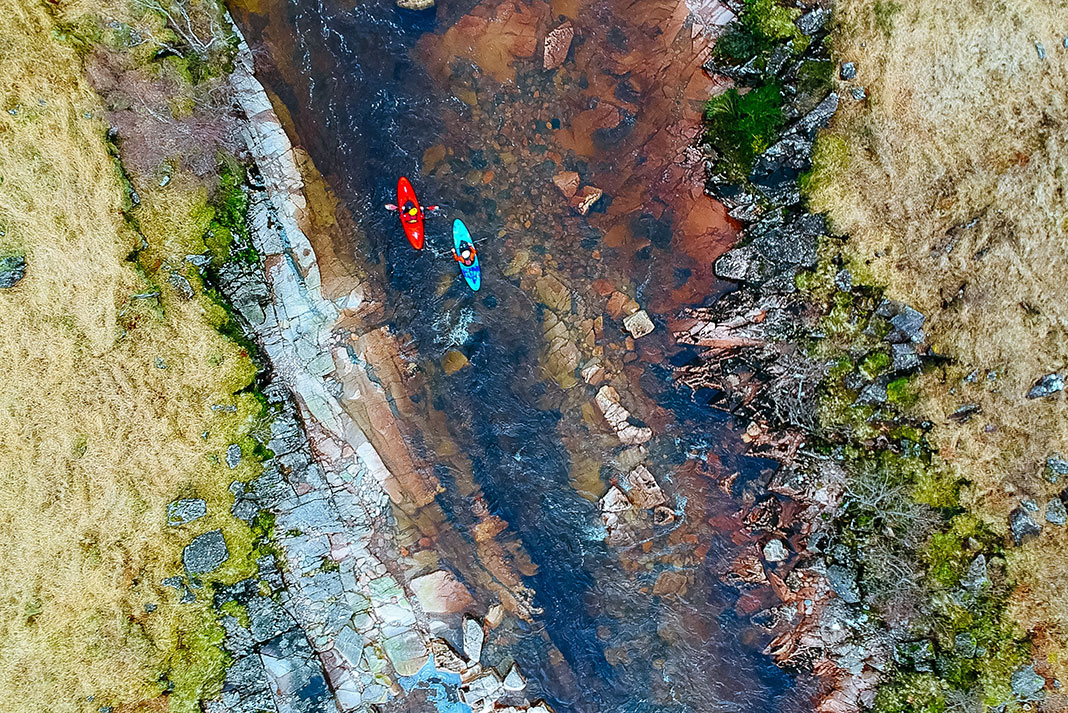Products You May Like
Want get more thrills out of your next whitewater run with less worry and hassle along the way? We’ve collected 30 essential river running skills to help you amp up the ride and make certain your path remains long and winding.
7 essential river paddling skills
1 Paddling never gets old and neither do the young at heart
Professional motorcycle racer Bill McKenna told Cycle magazine in 1982, “Life is not a journey to the grave with the intention to arrive safely in a pretty and well-preserved body, but rather to skid in broadside, thoroughly used up, totally worn out and loudly proclaiming: ‘Wow—what a ride!’” His words have since been quoted and used for inspiration many times by everyone from backcountry snowboarders to cancer patients, from marathon runners to piss-and-vinegar octogenarians. It’s good advice. Advice that most river runners would understand and rejoice with an “Amen.” It suggests that we should never be too fearful to try, or too old to continue.
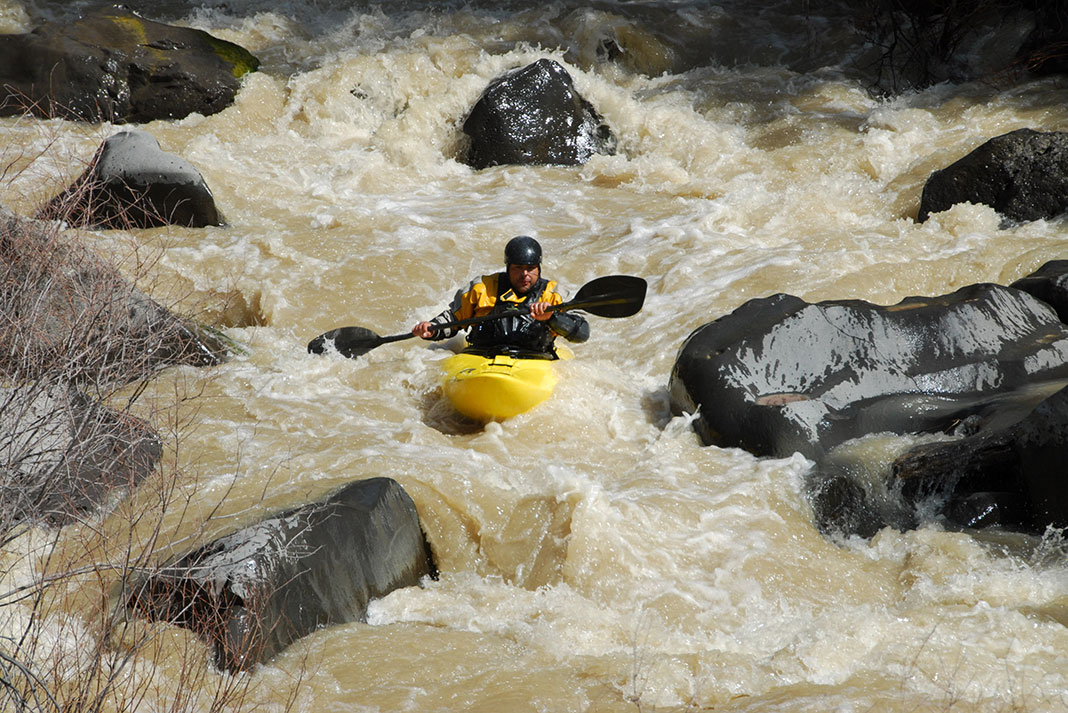
2 Punch holes
Like sussing out a hottie at the bar before your mates do, punching a hole takes speed, an aggressive attitude and timing. Approach with plenty of momentum, grit your teeth and lean forward, and take your last stroke just as you hit the wall (of water). You’ll need to dig deep to get a good grasp of the undercurrents and be carried through (in other words, put your blade in the green water beneath the foam pile). She, er…the hole, is all yours.
3 Hand paddle
Leave that caveman’s club of a paddle behind (yes, we mean your carbon crankshaft) and strap a pair of these floppy dinner plates to your mitts. Hand paddling is the gnarly, minimalist wave of the future. Originally embraced by squirt boaters—that loony breed of underwater kayakers—as an easy and uncluttered way to get downtime, hand paddles are catching on in river running circles as well. Why? It’s a great way to learn how to feel the water. It’s also wicked training for when, and we mean when, your paddle breaks. Not convinced? Well, consider that the infamously difficult and treacherous Green River Race even has a separate category for hand paddlers.
4 Seal launch
It looks cool and it’s the most air you can get with absolutely zero paddling skills. A seal launch is sometimes the only way to drop into a run and it’s definitely the most fun.
Step 1: Pick a clear launch zone with deep water below. Hold your paddle in your control hand and push off with your other hand. Resist offers of assistance from overzealous friends and onlookers.
Step 2: Aim to pencil in at a 70- to 80-degree angle so your kayak’s rocker and buoyancy bring you smoothly to the surface. Your launch speed is the main factor in your angle of entry. Too little umph, you’ll go ass-over-teakettle. Too much and you’ll land flat and hard.
Step 3: Hold your paddle slightly over your head or alongside your boat so it doesn’t biff you in the face when you hit the water.
5 Catch waves on the fly
Save traffic jams for the drive home; this cool move will keep you out of the eddy and on the wave. As you float downstream, approach the wave facing upstream and glancing over your shoulder to line yourself up with the steepest part. Paddle hard forward against the current to slow yourself as you slip toward the wave. Lean onto your back deck to prevent nose-diving when you drop into the trough. When your bow is clear, immediately throw your weight forward and take a few strong forward strokes to stay on the wave face. Surf.
6 Boof
Every paddler’s favourite onomatopoeia is also the crux of her creeking success. Boofing allows you to clear small waterfalls, pour-overs and holes and avoid vertical pins. The boof is a two-part animal—learn it well.
Approach: You need plenty of speed to launch clear of the hole at the bottom of the drop. Head for the steepest part of the drop and aim off-centre to avoid the stickiest part of the hole. Remember that a rock at the lip of a drop can serve as a launch ramp if you hit it with just your bow.
Boof stroke: Plant this power stroke just over the lip. Picture yourself pulling against the face of the falling water. Thrust your hips forward as you pull on the paddle to lift your bow. The further you pull and thrust, the flatter your boat will land. Once clear of the lip, bring your weight forward for the landing. Have your paddle ready for a support stroke or to pull you away from the hole.
7 “It’s snowing” is not a valid reason to stop paddling
‘Nuff said.
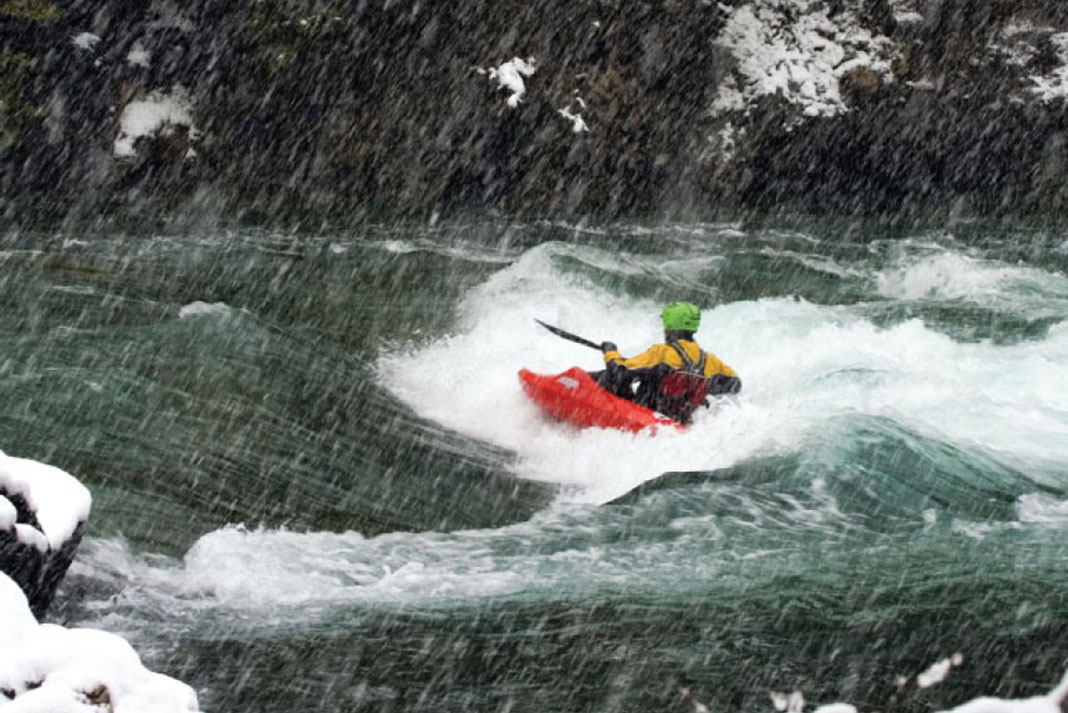
6 essential river planning skills
1 Find friends
Paddling with a mate is more fun, safer and easier on the budget than paddling alone. Like partners in mountaineering or even marriage, the best river running partner is one with whom you share trust and similar goals. For example, if one climbing partner is determined to reach the summit and the other is simply content to be on the mountain, the safety of both is threatened by the resulting frustration and hostility.
Kayaking, mountaineering and swiftwater rescue instructor Franco Ferrero emphasizes the importance of a team-focused environment, “To avoid trashings and shattered confidence, paddle with people who will support you.” It is beneficial to spend time around paddlers of different skill levels and experience, as long as expectations are discussed and understood by every member of the group. “Chances are you will put a lot of thought into the gear you take with you—why not the folks you paddle with as well?” says veteran expedition paddler Phil DeRiemer.
2 Take the shortest walk out
Whether you’re out for an afternoon on a local river or planning an unsupported multi-day, knowing where you can pull out if the shit hits the fan is an integral part of river running safety. Along with analyzing maps and reading guidebooks, the three-dimensional satellite imagery on Google Earth allows you to scout topography, drainages and escape routes before you leave home. But remember, says first aid professional and Rescue 3 instructor Franco Ferrero, “If something goes wrong, it is your problem, not the guidebook writer’s.” The most accurate information about a river is often gathered by chatting with locals and paddlers who have first-hand knowledge.
3 Know the flow to go
Release schedules: Don’t get swamped or stranded; many dam-controlled rivers have a regular schedule of water flows. Miss the window and you’ll find yourself hiking out.
Water levels: River hazards change dramatically as water levels change. Seasonal and daily fluctuations are created by melting snow or glaciers and rainfall. Expect higher levels on snowmelt rivers in late spring to early summer and during late afternoon when the midday sun has heated things up. River gauges and landmarks help compare current water levels to those cited in the guidebook.
 Flood hazards: In his classic book Kayak, the late William Nealy stated that there are three reasons for running a river in flood: Accident (flash flood), misadventure (ignorance of water level), or choice (defective genetic programming). Let’s address the accidental flash flood. This phenomenon is most common and hazardous in narrow gorges where rainstorms can create a massive wall of water that rushes down the canyon with little or no warning. Rivers that run through broad dry washes are also dangerous, as these plains can flood unexpectedly. When considering these rivers, keep an eye on the weather in the days leading up to your trip and don’t put in if rain is forecast or the clouds look threatening. Of course, some rivers can only be run in flood, to which we’d reply, “It’s in my genes, man.”
Flood hazards: In his classic book Kayak, the late William Nealy stated that there are three reasons for running a river in flood: Accident (flash flood), misadventure (ignorance of water level), or choice (defective genetic programming). Let’s address the accidental flash flood. This phenomenon is most common and hazardous in narrow gorges where rainstorms can create a massive wall of water that rushes down the canyon with little or no warning. Rivers that run through broad dry washes are also dangerous, as these plains can flood unexpectedly. When considering these rivers, keep an eye on the weather in the days leading up to your trip and don’t put in if rain is forecast or the clouds look threatening. Of course, some rivers can only be run in flood, to which we’d reply, “It’s in my genes, man.”
4 Pack a boat
A few concepts to remember: If it’s not clipped in, it will eject when you do. Practice with a loaded boat. Heavy-duty garbage bags are your friends, even inside drybags. Pack heavy things like food up front, within carved-out storage compartments in the pillar or bulkhead, or right behind your seat and balanced on both sides—this keeps the ends of your boat feeling light for more control on the water. Expedition paddler and Whistler Search and Rescue volunteer Steve Whittall says, “Be creative. Customize your boat and pick versatile gear—a tarp provides shelter for your kitchen and sleeping and means you don’t need rain gear.” Keep the things you will need soonest—lunch, water purifier, cozy jumper—the most accessible. And finally, have your throw bag handy.
5 Access transportation
Planning transportation can be as simple as driving on well-surfaced roads and dropping one of your vehicles at the take-out. Alternatively, gaining access to a backcountry or international river may be a complicated web of flights, four-wheel-driving and foot-packing. In some places, your transportation can range from trains or helicopters to rattletrap chicken-filled buses or even mules. “Just driving around can be the most hair-raising part of the trip,” cautions seasoned international expedition leader Dunbar Hardy. Hardy recommends asking lots of questions—if you’re renting a shuttle vehicle for example, you may need to bring your own roof racks—and making the most of local knowledge for directions, road conditions and best put-in and take-out sites. We’d add to the list learning how to drive off-road and packing extra tow straps.
6 Hours of daylight
Know how many you have and respect this fact.
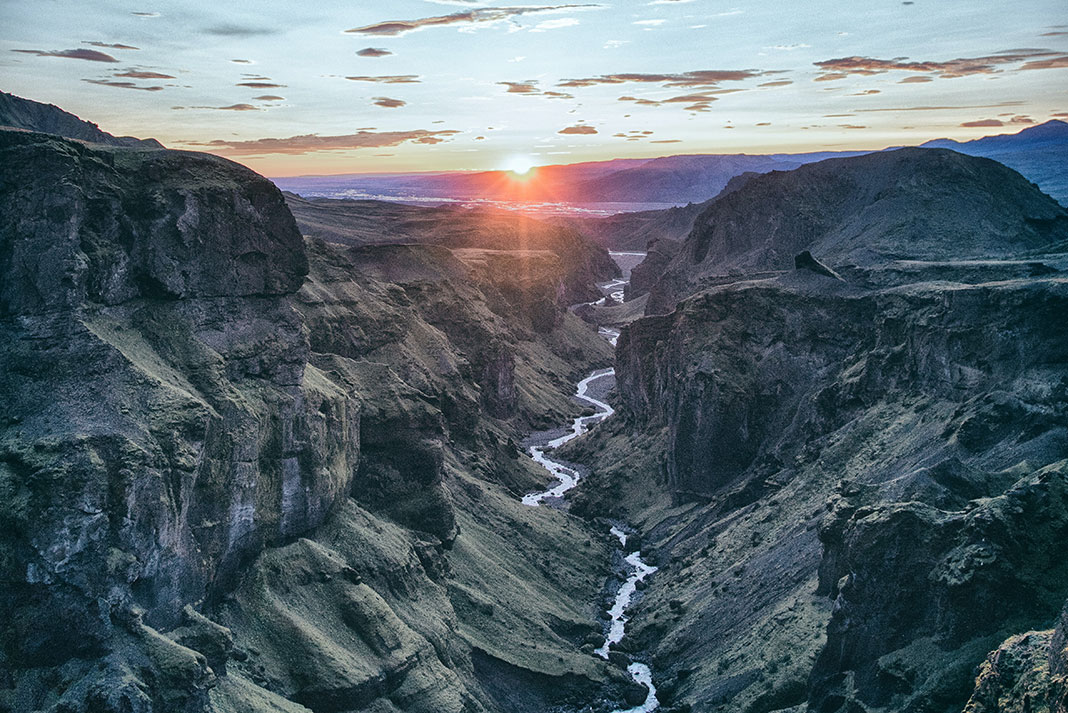
6 essential on-river skills
1 Scout a rapid
Reading the river and choosing a good line are the essentials of keeping your run and your shorts clean. Three pieces of wisdom from the scouting sage:
Get the whole picture: Try scouting from various positions—above, below and on the other side of the rapid. Look for prominent features and landmarks so you can stay on line once you’re in the meat.
Recognize friendly features: Note nasty features, but don’t dwell on them. You’re searching for a good line down a run, not a bad one. Look for downstream Vs, eddies, troughs and any pillow rocks you can use to your advantage. Look also for the most fun or—on easier rivers—challenging line.
Master the art of visualization: Draw a mental path of where you want to go and picture yourself making the moves to hit that line. Run through the body positions and strokes you will use on land to burn them into your memory. Finally, if you can’t visualize a successful outcome, don’t run the rapid.
2 Know your limits
The dry land sneak is a perfectly acceptable alternative to running rapids. “No matter how good you get, portaging will always be a big part of paddling,” says veteran guide and paddling coach Kevin Varette. The decision to walk should be based on an objective analysis of the hazards and consequences combined with an honest self-assessment of your own capabilities. Everyone has his or her own level of acceptable risk and even skilled paddlers experience off days—trust your instincts. Professional kayaker and all-round tough cookie Anna Levesque urges anyone who feels shamed or pressured into running a rapid to reconsider. “Ultimately, you are the one who has to deal with the consequences of your actions.”
3 Be a hot lunch hero
Firing up some warm grub and a hot drink is good for your body and soul—and it’s also a great way to make friends.
Nutrition: Eating right helps you stay warm and avoid plummeting energy levels during a long day of river running. Rule number one: Don’t forgo the pasta and potato salad at lunch. Complex carbohydrates such as rice, pasta, bread and cereals provide energy that is made available to your body at a steady rate over several hours, unlike the sudden energy spike and trough produced by the simple sugars in your favourite candy bar. Rule number two: If you can’t seem to warm up, chug a hot cocoa and eat some more muffins. Early symptoms of hypothermia include shivering and exhaustion, followed by the “umbles”—stumbling, fumbling and mumbling—as you lose feeling, coordination and mental acuity.
Hydration: Humans are big bags of water. Keeping this bag topped up is a constant battle since you lose this precious resource whenever you sweat and every time you take a breath. Failing to replenish your fluids can profoundly affect your judgment, stamina and performance. Consider that a drop of just two per cent in your body fluid results in decreased group cooperation, mental deterioration and a 25 per cent loss in efficiency. To ensure that you are in top mental and physical form, you should drink at least three to four litres a day.
4 Practice good manners
Don’t be a dirtbag: Pick up your trash. If you really want to be a hero, pick up someone else’s.
Right of way: Even if you grew up in Palmer Rapids and have never seen a controlled intersection, you should learn right of way on the river: always yield to the boater heading downstream. As a downstream boater, be courteous and avoid paddlers playing below you.
Local laws: We’ve packed out our own waste in the canyons of the desert Southwest—and not because we like to spend six days with a doggie bag full of shit. Respect these laws; they protect our rivers.
5 It’s okay to cry on the river
Anna Levesque says so and she can kick your ass. Kayaking delivers intense experiences to which crying is a normal emotional response. Whether it’s the excitement of completing a new move, the relief of emerging unscathed from a challenging rapid, or frustration at failing to attain a goal, crying is a healthy outlet for a flood of different emotions. Don’t assume that someone is afraid or unable to “keep it together” just because she shows emotion, warns Levesque. “You don’t have to be a daredevil to enjoy the river,” says the Girls at Play guru and World Freestyle Championship medalist.
6 Respect the locals
The river is their home, you’re just visiting.
6 essential river gear skills
1 Build the ultimate river running kit
In addition to your boat, helmet, paddle, PFD, skirt if kayaking and the clothes on your back, here is our list of items to take on the river.
First aid kit: How many times do we have to say it? Carry one and know how to use it.
Rescue kit: Throw rope (50–75 feet); tow line—stretchy cow tail attached to quick-release belt; pin kit (see essential rescue skill #3, below); plastic pea-less whistle; knife or shears; breakdown spare paddle and, of course, duct tape.
Personal gear: Nose plugs; small drybag with extra insulating layer, headlamp and lighter in case you are stuck out longer than expected; water bottle; lunch and extra energy bars.
Additional items for overnights: Sleeping bag and pad; tent, tarp or bivy sack; repair kit—multi-tool and Seam Grip or similar flexible, waterproof glue; water purification and more food; cook pot, stove and fuel; bowl and cutlery; camp clothes, compass and topo map.
2 Choose the perfect boat
If your interests lie in throwing blunts and flat spins on your river runs, then you should shack up with a playful boat. Your coquettish play partner will be shorter, with more aggressive edges to maximize manoeuvrability. On the other hand, if luscious tumbling drops get your heart thumping, then you’re more of a serious river running man or woman. The right accomplice for those longer journeys and steep descents will be more voluminous and curvaceous to give you a fast but forgiving ride. Finally, in case you had doubts, size does matter. Consider length, diameter and surplus… of your legs, hips and budget.
3 Get protected from the sun
Our bodies produce and lose heat constantly. If we were unable to dissipate heat, our body temperatures would rise steadily until we literally cooked ourselves. According to wilderness medical professionals at the National Outdoor Leadership School, radiation from a person’s skin to the environment accounts for 65 per cent of heat loss when the air temperature is lower than the body temperature. Under a hot sun however, our bodies actually gain heat through radiation. Evaporation from sweating and gradual acclimatization—typically taking 10 days to two weeks—to the hot climate become our only methods of staying cool.
Protecting yourself from direct exposure to the sun goes a long way in preventing dangerous overheating and other sun-related ailments. Go for a swim or roll often to cool your core body temperature. Canoe trippers should wear a light-coloured, long-sleeved paddling shirt. Frequently reapply waterproof sunscreen on exposed skin. Don those cool polarized shades to prevent damage to your eyes. Finally, Velcro a geeky visor on your helmet or splurge for a stylin’ design with a built-in peak.
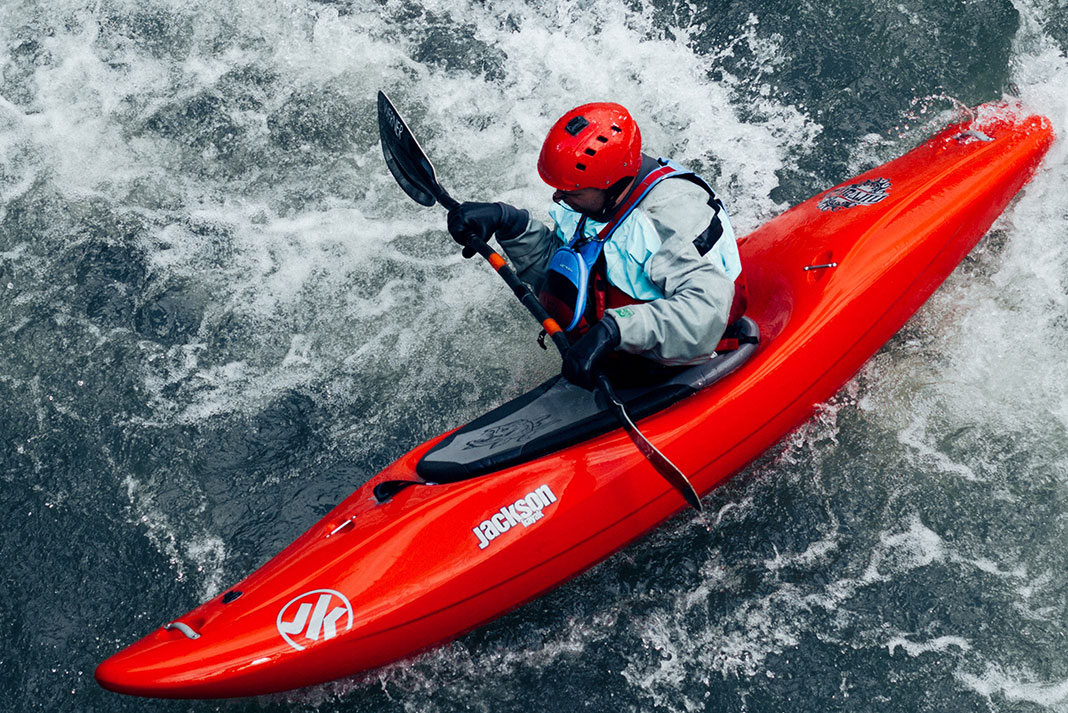
4 Dress for conditions
There are two truths that we paddlers must learn. The first is to dress for the coldest temperature, whether it’s water or air. The second is that it’s better to be dry. Cold drizzly days, long swims on icy mountain runs and insisting that skin to wind makes you a river hero are all equally effective ways of becoming cold, miserable or worse.
Avoid bargain paddling tops that are not breathable and only half as waterproof as your yellow grade school slicker. Shelling out for a comfortable and rugged drysuit or top made of quality fabric is an investment you’ll never regret. It will extend your paddling season and make every day enjoyable.
5 Have happy feet
Closed-toed shoes rock, open-toed sandals suck. The reason: Subungual hematoma (crush injury) or toenail delamination—need we say more? River shoes need to provide protection, good traction on wet rocks and be slim and flexible enough that your feet fit comfortably into your kayak. Mesh and sandal-style shoes are quick-drying and sporty, but neoprene booties offer superior insulation and are your best defense against leaches. Above all, whatever your footwear—remember to wear them. Renowned whitewater guide Phil DeRiemer tells his clients the story of a kayaker who hiked barefoot eight miles out of the Grand Canyon of the Stikine after a bad swim washed his boat away with his shoes stowed safely behind the seat—he says it wasn’t him.
6 Four ways to lose body heat
Conduction, convection, radiation and evaporation. It’s not a contest to see who can do all four at once.
5 essential river rescue skills
1 Get your signals straight
Save the elaborate gesticulations for the ballpark. Hand and paddle signals should be simple and unequivocal. Five you definitely need to know:
Stop: Arms outstretched, horizontal to the ground or paddle held horizontally above your head.
Go (safe to proceed): One arm straight up or paddle held vertically from shoulder height. Also used as a question: Is it safe to proceed?
O.K.: Fist tapping or held to the top of your head. Can also be used as a question: Are you okay?
Help: Both arms waving overhead to form an alternating V and X or paddle waved overhead from side to side.
Go here: Pointing with arm or paddle to the spot on the river your buddy should go. Never point to danger!
2 Learn the Hand of God
There are two good options for saving your friend’s butt while allowing him to stay in his boat and avoid the dreaded swim and compulsory round of complimentary beers. The T-rescue—in which the rescue boat approaches the midsection of the upset boat, allowing the capsized paddler to grab the offered bow or stern and hip-flick up—is quick and simple but won’t work if you can’t make a “T” or your friend doesn’t have the awareness to do the rescue. In these cases, a Hand of God (HOG) is your best bet.
Step 1: Pull up parallel to the hapless boat. Reach across the overturned hull with your near hand and grab the edge. Place your other hand on the hull beside you.
Step 2: Simultaneously push down hard on the near side and pull up on the far side to right the boat with the paddler still inside. It’s a miracle.
3 Build a rescue kit
For pinning, entrapment and nearly anything else that can go wrong. Minimum equipment should include: two prusiks, two pulleys, throw rope—minimum 50 feet, two carabiners and two slings or eight-foot lengths of webbing. Use a small stuff sack or wide-mouth bottle to store everything except the rope in a convenient, easy-to-access package. A versatile hauling system that you should learn to construct quickly is a Z-drag, which triples your pulling force by creating a 3:1 mechanical advantage. Here’s how to rig a Z-drag:
Step 1: Construct an anchor by wrapping a piece of webbing or sling around a sturdy tree or rock. Clip a carabiner and pulley through the webbing.
Step 2: Attach a rope to the boat and run the rope through the anchor pulley. Now attach a prusik cord as far back down the rope toward the boat as possible.
Step 3: Clip a second carabiner and pulley through the prusik and run the rope through it and back toward the anchor. Look at your system: the rope should make a Z shape with you pulling on the rope in the same direction as the main line is pulling on the load.
4 Do the live bait rescue
Use this method if the swimmer is injured, panicked or otherwise unlikely to catch a throw bag—like if he is getting worked in a hole. A soon-to-be-wet rescuer is attached via a quick-release belt to a line that is waist-belayed by a happy-to-stay-dry second rescuer. For an effective belay, the dry rescuer should try to sit into the bank or otherwise firmly brace herself in anticipation of the sudden pull of two swimmers. When the swimmer is in range, the tethered rescuer belly flops into the water and grabs the victim from behind by his PFD shoulder straps. By holding the swimmer to his chest in this way, the rescuer protects himself against the potential danger of a panicked victim. The rescue site should be carefully selected so both swimmer and rescuer pendulum safely into a waiting eddy.

5 Set a dislocated shoulder
Our best advice is to avoid a dislocated shoulder altogether. Mind the paddler’s box—a rectangle formed by your arms, paddle and chest when your hands are kept in front of and parallel to your shoulders. Paddling outside the box is an invitation to shoulder injury. If the worst happens, here’s what to do.
Step 1: Reset the dislocation as soon after the injury as possible, before the muscle spasm becomes too severe. Have the injured person sit in front of a tree. Tie a loop of webbing tautly around his chest and the tree.
Step 2: Kneel on one knee facing the victim and hold the injured arm level in the direction of the dislocation, with the elbow bent at 90 degrees.
Step 3: Slip a second loop of webbing around your hips and the injured arm.
Step 4: Lean backwards while slowly bending the elbow towards the shoulder to increase traction, allowing the muscles to relax and the shoulder to pop into place. This can take less than a minute or upwards of 30.
Respect the river and don’t be a dirtbag—you’re just visiting. | Feature photo: Scott Stephens/Unsplash
